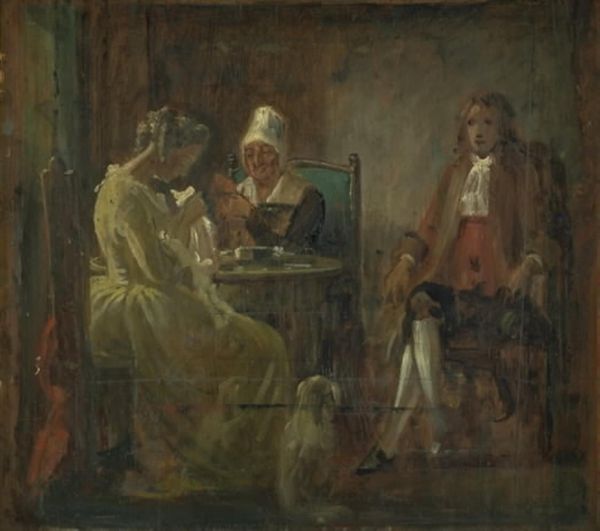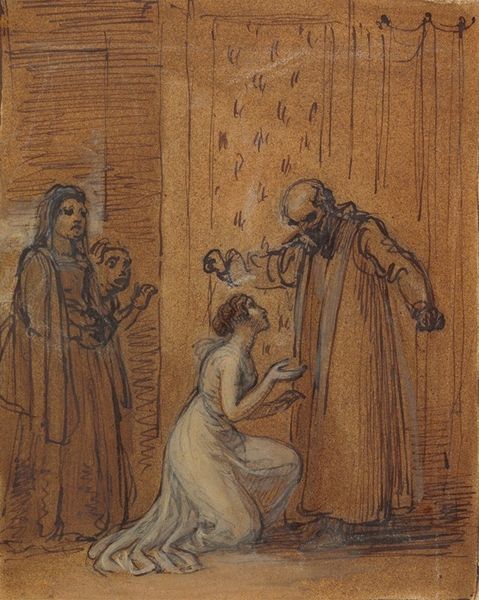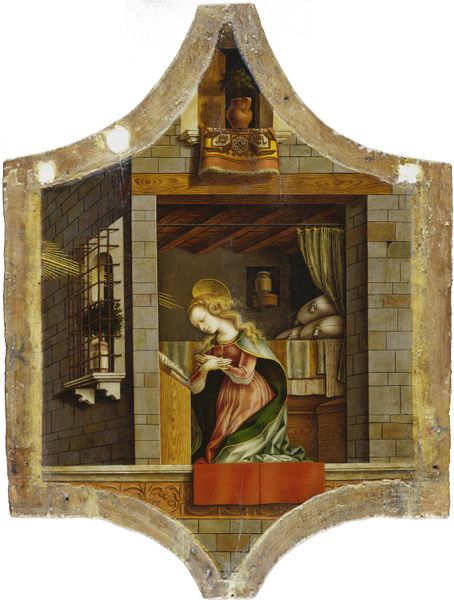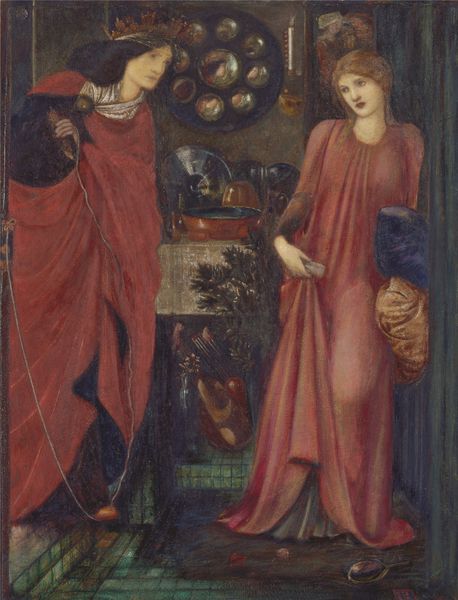
Allegory of March – Triumph of Minerva and Sign of Aries. Frescos in Palazzo Schifanoia (detail) 1470
0:00
0:00
fresco
#
portrait
#
narrative-art
#
figuration
#
fresco
#
oil painting
#
genre-painting
#
history-painting
#
italian-renaissance
Copyright: Public domain
Editor: Here we have a detail from Francesco del Cossa’s "Allegory of March – Triumph of Minerva and Sign of Aries," a fresco from around 1470. There's a remarkable stillness to these women, each absorbed in what appears to be needlework. It almost feels… sacred. What do you make of it? Curator: Sacred is an interesting word. It feels almost as though Cossa has granted us a window into the private world of women. Notice the muted palette, drawing our focus not to courtly grandeur but inward, towards contemplation and quiet craft. Does this echo anything in your mind? A memory perhaps? Editor: I suppose I'm struck by the absence of any direct connection between them, which feels strange given the intimacy of the setting. I was expecting at least one face pointed at me, the viewer. Why do you think that is? Curator: Exactly! Cossa isn’t interested in idealized beauty. The figures are…individual, each seemingly lost in her task. Could the piece, in its essence, challenge how a group relates? This scene is part of a larger astrological narrative, with Minerva representing wisdom. So is this really just women doing chores? What do you think that silence means? Editor: So, by making the ordinary visible – by treating labor and its quiet diligence as sacred– is Cossa elevating it, placing the everyday life on the same stage as mythology? It almost seems modern! Curator: Indeed. Cossa compels us to observe closely and find significance where we might usually overlook it. Art can shift our perceptions and question our presumptions; even an image as subtle as this becomes potent with implications. It’s exciting when a piece continues to generate questions! Editor: Yes, absolutely, it gives new respect for work, tradition, and the overlooked corners of women’s stories.
Comments
No comments
Be the first to comment and join the conversation on the ultimate creative platform.














